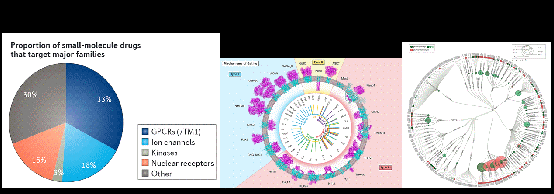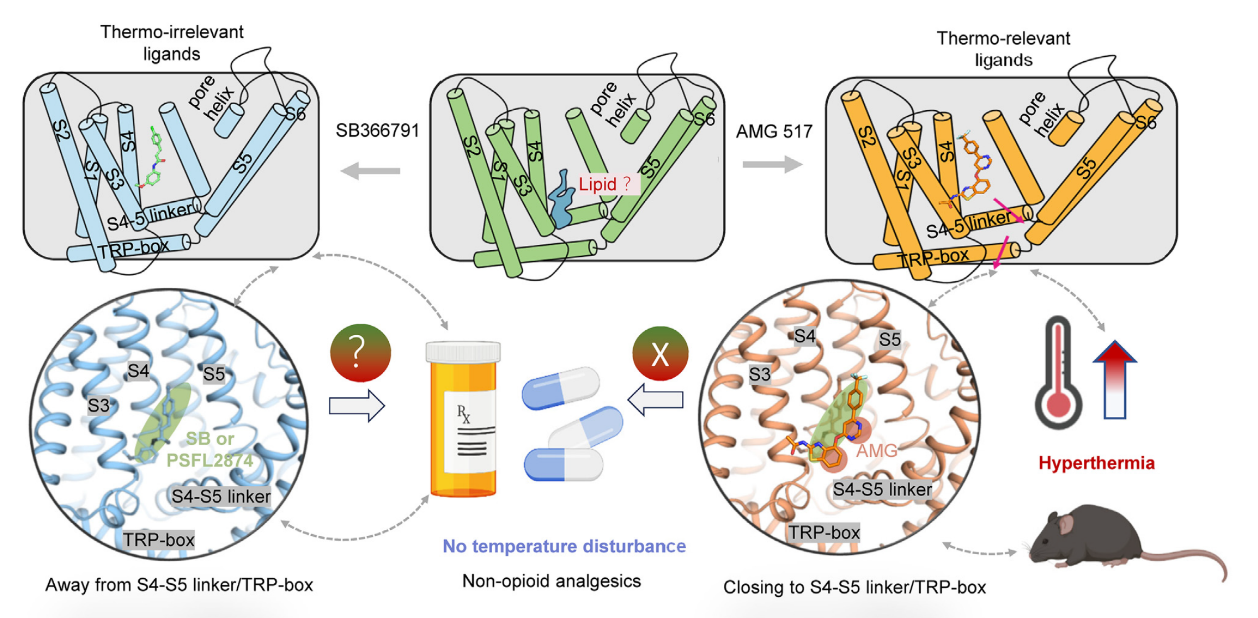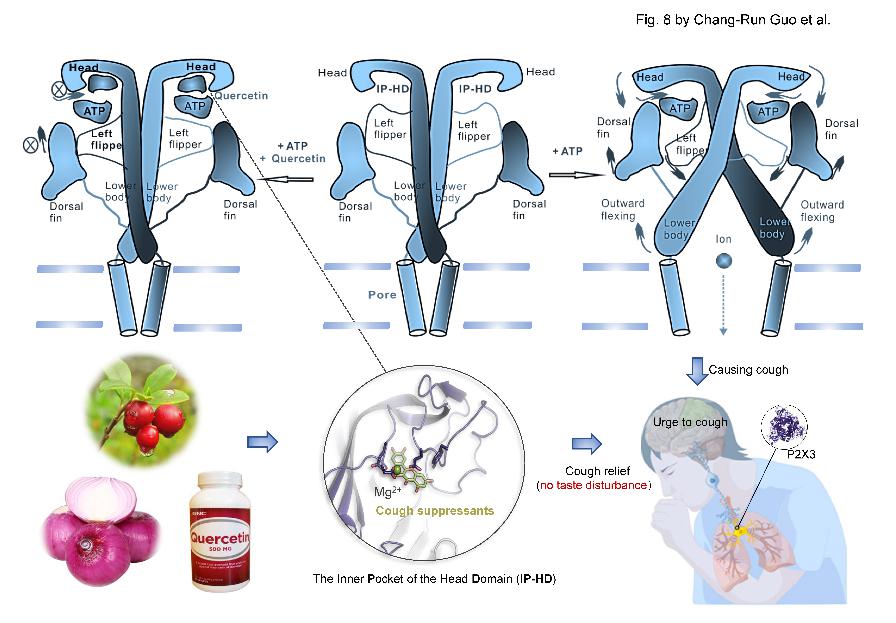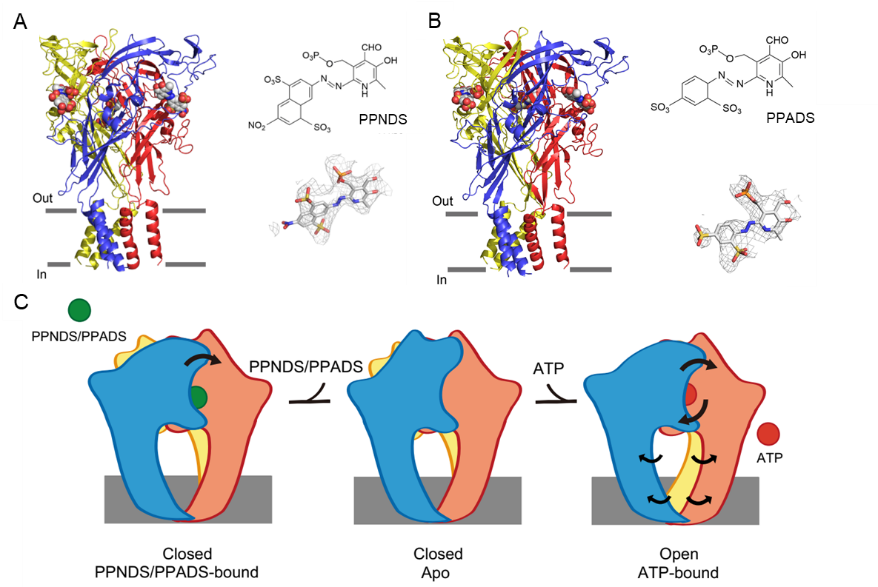Recently, the team at the School of Basic Medicine and Clinical Pharmacy has made significant strides in the field of non-classical biased signaling regulation of membrane receptors, with several findings published in these renowned journals. The research reveals that membrane receptors on the cell surface, which serve as primary physiological sensors encompassing diverse functions such as vision, olfaction, temperature, and pressure sensation, play essential roles in various cellular and tissue functions. Aberrations in membrane protein activity are associated with numerous diseases, making these receptors critical targets in drug development. Currently, over 50% of small molecule drugs target human membrane proteins, with G protein-coupled receptors (GPCRs) and ion channels being the most prominent classes of membrane receptor targets (Figure 1). The allosteric modulation of membrane protein receptors, characterized by preferential and fine-tuned stabilization of distinct active conformational states, offers novel spatiotemporal signaling pathways. This refined regulation could potentially minimize side effects, enabling previously "undruggable" membrane proteins to become viable therapeutic targets, and allowing the dissociation of therapeutic efficacy from adverse effects.

Figure 1. More than 50% of currently marketed small molecule drugs target human membrane proteins, with G protein-coupled receptors (GPCRs) and ion channels being the top two classes of membrane receptors targeted (Image sources: Hauser et al., Nat Rev Drug Discov, 2017; Baron Chanda et al., Cell, 2017; Santos R et al., Nat Rev Drug Discov, 2017).
The TRPV1 receptor, a non-selective cation channel, was initially identified by Professor David Julius during his investigation into the mechanisms underlying capsaicin-induced pain sensation. Subsequently, TRPV1 was recognized as a heat-sensitive receptor, activated at temperatures associated with pain perception. Although various TRPV1 antagonists are currently undergoing clinical trials, the development of TRPV1 agonists/antagonists remains challenging due to their propensity to cause significant fluctuations in core body temperature, limiting their therapeutic potential. The molecular mechanisms underlying these temperature changes induced by TRPV1-targeted analgesics remain poorly understood. However, a recent study led by Professor Yu Ye's team at the School of Basic Medicine and Clinical Pharmacy, published in Neuron, titled "TRPV1 analgesics disturb core body temperature via a biased allosteric mechanism involving conformations distinct from that for nociception," provides new insights into this issue. The research presents compelling evidence that subtle differences in ligand binding at the same site on TRPV1 encode functions related to both pain sensation and temperature regulation. This discovery challenges the traditional binary view of receptors as simple on-off switches and underscores the complexity of channel proteins, which exhibit continuous, biased signal encoding capabilities. These findings lay a robust foundation for the development of TRPV1-targeted non-opioid analgesics that do not alter body temperature of human (Figure 2). The primary contributors to this work include Ph.D. student Huang Yizhe, postdoctoral fellow Sun Mengyang, master's student Ma Jingxian, and Ph.D. student Bian Yujing. The full text is available at:https://doi.org/10.1016/j.neuron.2024.02.016

Figure 2. Minor differences in ligand binding at the same site on ion channels can also mediate biased signaling (Image source: Huang YZ et al., Neuron, 2024.6).
Similar to the TRPV1-targeted analgesic strategy, the development of antitussive drugs targeting the P2X3 receptor often encounters complications such as taste disturbances. By employing approaches such as voltage-clamp fluorometry combined with whole-cell patch-clamp, the team uncovered a novel allosteric regulation mechanism of the P2X3 receptor. Based on this mechanism, they developed new P2X3 receptor antagonists, which, when tested in various animal models, demonstrated effective antitussive action with reduced taste disturbance side effects. These findings, published in Nature Communications under the title "Chronic cough relief by allosteric modulation of P2X3 without taste disturbance," offer a new strategy for developing drugs targeting the P2X3 receptor to treat refractory chronic cough. The primary contributors to this work are Associate Professor Guo Changrun, master's student Zhang Zhongzhe (jointly trained by Hunan Normal University), and master's student Zhou Xing from China Pharmaceutical University. The full text is available at: https://www.nature.com/articles/s41467-023-41495-0

Figure 3. A novel strategy for drug development targeting the P2X3 receptor in the treatment of refractory chronic cough (Image source: Guo CR et al., Nat Commun, 2023.12).
In addition, in collaboration with Professor Hattori's team from Fudan University, the research team published an article titled "Structural insights into the orthosteric inhibition of P2X receptors by non-ATP-analog antagonists" in eLife. Utilizing single-particle cryo-electron microscopy in conjunction with electrophysiological experiments, the study elucidated the complex structures of the P2X7 receptor bound to two pyridoxal phosphate derivatives. The research further analyzed the regulatory effects and mechanisms of these orthosteric antagonists on the P2X7 receptor, providing crucial structural insights for the design of P2X7 subtype-specific drugs. The primary contributors to this work from China Pharmaceutical University include Associate Professor Guo Changrun and master's student Yue Chenxi. The full text is available at: https://elifesciences.org/articles/92829

Figure 4. A novel strategy for drug development targeting the P2X3 receptor in the treatment of refractory chronic cough (Image source: Sheng DS et al., eLife, 2024.4).
The "Membrane Receptor Function and Regulation" team, under the leadership of Professor Yu Ye at the School of Basic Medicine and Clinical Pharmacy, has long been engaged in investigating key biophysical challenges in transmembrane signaling of membrane proteins associated with major diseases of the nervous, immune, and cardiovascular systems. This includes studies on disease mechanisms, the discovery of novel drug candidates, and the development of new technologies and methodologies. Since joining China Pharmaceutical University in November 2018, the team has published a series of influential research findings in high-impact journals, including Neuron (2024), Nature Communications (2023a, 2023b), eLife (2024, 2022), Journal of Clinical Investigation (2021), Science Bulletin (2023, 2018), Computational and Structural Biotechnology Journal (2022, 2024), British Journal of Pharmacology (2023), and Acta Pharmaceutica Sinica B (2023).